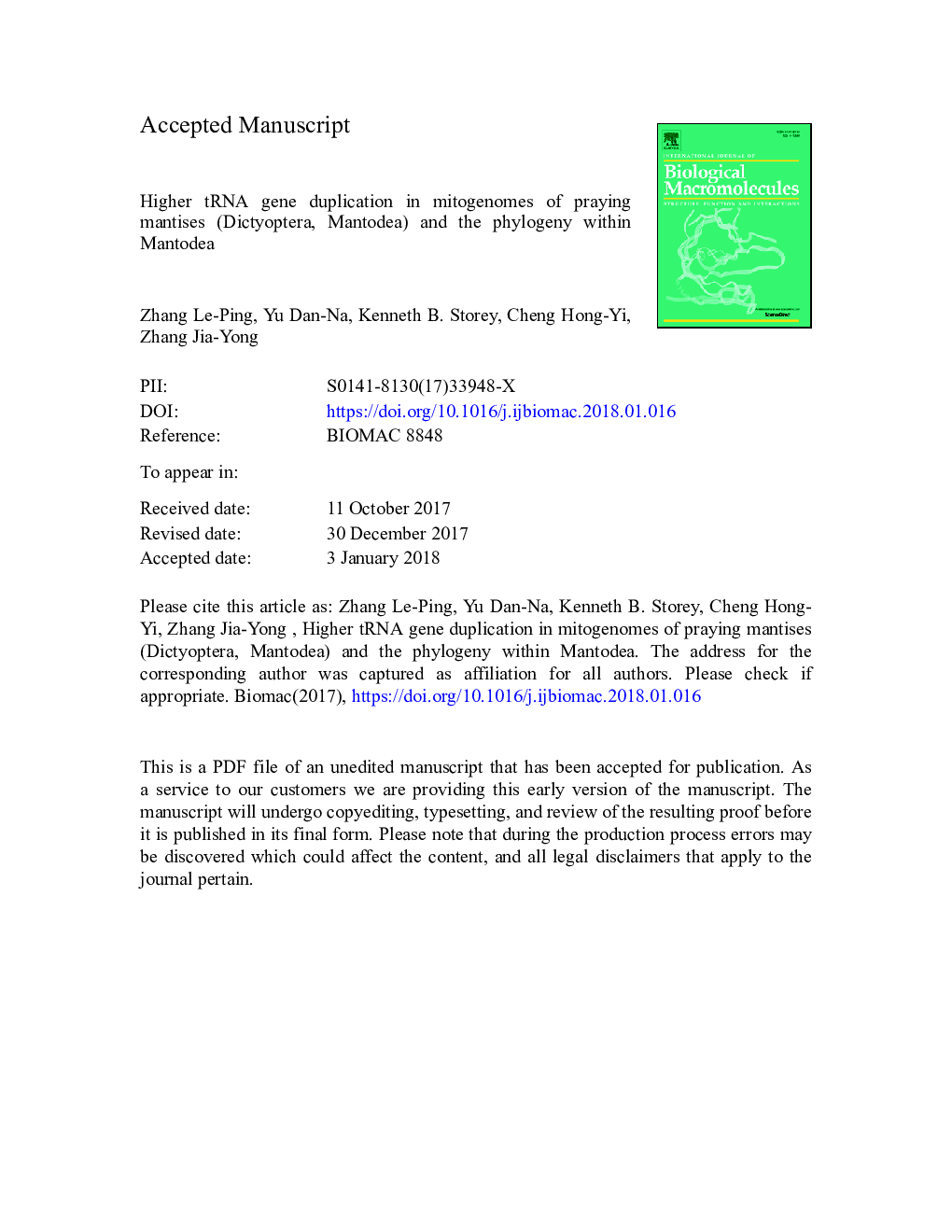| Article ID | Journal | Published Year | Pages | File Type |
|---|---|---|---|---|
| 8328055 | International Journal of Biological Macromolecules | 2018 | 29 Pages |
Abstract
We acquired 21 complete mitogenomes and 6 nearly complete mitogenomes of mantises belonging to 8 families (Hymenopodidae, Iridopterygidae, Mantidae, Metallyticidae, Sibyllidae, Tarachodidae, Thespidae, Toxoderidae) using 14 pairs of mantid specific primer sets and found that 5 species of mantises have duplicate copies (2-4) of trnR: Ambivia undata, Creobroter jiangxiensis, Creobroter urbanus, Phyllothelys sp1. and Theopropus elegans while two novel gene arrangements CR-I-NCR-I-NCR-I-NCR-I-NCR-I-NCR*-Q-M and COII-K*-D*-K-D*-K-D*-K-D were found in Schizocephala bicornis and Stenotoxodera porioni, respectively. The multiple copies of trnR are caused by independent duplications. The gene arrangements in Stenotoxodera porioni with three identical copies of trnK can be explained as mid-way through the TDRL process while the form of gene arrangement in Schizocephala bicornis is unclear. In the phylogeny at the family level, the monophyly of Liturgusidae and Iridopterygidae was supported, whereas the monophyly of Hymenopodidae, Mantidae and Tarachodidae wasn't. The features of mantis mitochondrial genomes including high duplication rates of trnR, trnK and trnI indicate that Mantodea mitochondrial genomes maybe a useful model system for studying gene duplication. However, derived gene arrangements may not be appropriate for phylogenetic inference in Mantodea as they aren't synapomorphy and aren't shared by close relatives.
Keywords
ND5Cytochrome c oxidase subunit IIItRNAGlutRNAIletRNALysCOIIITDRLND3NADH dehydrogenase subunit 2trnKtRNAND2atp8tRNAPheNADH dehydrogenase subunit 5tRNAAsptRNASertrNSNCRATP synthase F0 subunit 8rRNACytochrome c oxidase subunit ICOItRNAAlatrnPtRNATrpRibosomal RNABayesian inferenceMaximum likelihoodcytochrome c oxidase subunit IIFigfigurePhylogenyMantodeaGene duplicationNoncoding regionControl regionNADH dehydrogenase subunit 3Nucleotidepolymerase chain reactionPCRMitochondrial genomeCOII
Related Topics
Life Sciences
Biochemistry, Genetics and Molecular Biology
Biochemistry
Authors
Le-Ping Zhang, Dan-Na Yu, Kenneth B. Storey, Hong-Yi Cheng, Jia-Yong Zhang,
